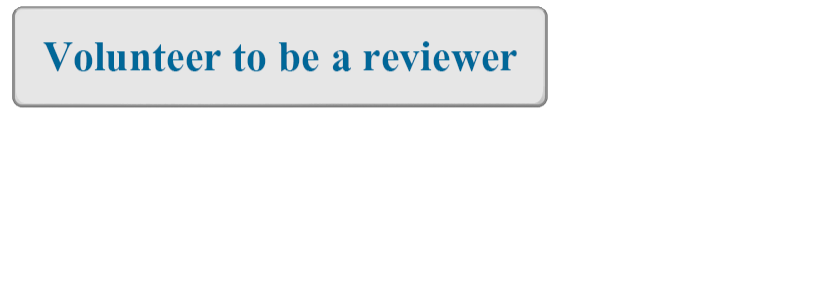สถานการณ์ฝีดาษลิง : ภาวะคุกคามสุขภาพจากโรคติดเชื้อไวรัส
คำสำคัญ:
การติดต่อ, การป้องกันและควบคุมโรค, ฝีดาษลิง, ระยะฟักตัว, อาการและอาการแสดงบทคัดย่อ
โรคฝีดาษลิง เกิดจากเชื้อไวรัสในจีนัส Orthopoxvirus เป็นโรคประถิ่นในแอฟริกากลางและตะวันตก แต่ในปี พ.ศ.2565 มีการระบาดซ้ำในหลายประเทศ องค์การอนามัยโลกรายงานจำนวนผู้ป่วยโรคฝีดาษลิงทั่วโลกตั้งแต่ปี พ.ศ.2565 – มีนาคม พ.ศ.2566 จำนวน 87,078 ราย และในประเทศไทย จำนวน 21 ราย ฝีดาษลิงติดต่อจากสัตว์สู่คน ได้แก่ ลิงและตระกูลลิง กระรอก หนู หนูยักษ์ หรือแม้แต่สุนัข และจากคนสู่คนได้ เชื้อไวรัสนี้พบในเลือด ต่อมน้ำเหลือง ตุ่มฝี และหยดละอองของทางเดินหายใจ ติดต่อโดยการสัมผัสตุ่มฝี ใกล้ชิดผู้ป่วย วัสดุหรือสิ่งของเครื่องใช้อื่นที่มีหยดละอองของเชื้อปนเปื้อน การเว้นระยะห่าง สวมหน้ากากอนามัย และล้างมือด้วยสบู่หรือเจลแอลกอฮอล์ จึงช่วยลดความเสี่ยงจากการติดเชื้อได้ ระยะฟักตัวประมาณ 5 ถึง 21 วัน จากนั้นมีไข้ ปวดศีรษะ ปวดกล้ามเนื้อ ไม่มีแรง เจ็บคอ ต่อมน้ำเหลืองโต มีตุ่มฝีกระจายจากใบหน้าและตามร่างกาย รวมทั้งฝ่ามือและฝ่าเท้า อาจมีภาวะแทรกซ้อนและรุนแรงในผู้ป่วยที่ภูมิคุ้มกันต่ำ มีอัตราการตายประมาณ ร้อยละ 10 ผู้ที่เคยฉีดวัคซีน (ปลูกฝี) ป้องกันโรคฝีดาษ สามารถป้องกันการติดเชื้อฝีดาษลิงได้ โรคนี้ยังไม่มีมาตรฐานการักษาแต่รักษาตามอาการ รวมถึงยาต้านไวรัสที่ใช้รักษาฝีดาษก็นำมาใช้รักษาฝีดาษลิงในรายที่มีอาการรุนแรง ถึงแม้ในประเทศไทยจะไม่มีรายงานผู้ติดเชื้อเพิ่มแล้ว แต่ยังคงเป็นโรคที่ต้องเฝ้าระวัง รวมถึงส่งเสริมพฤติกรรมการป้องกันตนเองจากการติดเชื้อ เพื่อป้องกันและควบคุมการระบาดที่เมื่อมีการเปิดพรมแดนเพื่อส่งเสริมการท่องเที่ยวและการเดินทางระหว่างประเทศ
Downloads
เอกสารอ้างอิง
Petersen E, Abubakar I, Ihekweazu C, Heymann D, Ntoumi F, Blumberg L, et al. Monkeypox—Enhancing public health preparedness for an emerging lethal human zoonotic epidemic threat in the wake of the smallpox post-eradication era. International journal of infectious diseases. 2019; 78: 78-84.
Barry M, Akkielah L, Al-Tawfiq JA, Memish ZA. Not every skin rash in a returning adult male traveler is monkeypox. Travel Medicine and Infectious Disease. 2022; 50: 102432.
Kaler J, Hussain A, Flores G, Kheiri S, Desrosiers D. Monkeypox: a comprehensive review of transmission, pathogenesis, and manifestation. Cureus. 2022; 14(7).
Yong SEF, Ng OT, Ho ZJM, Mak TM, Marimuthu K, Vasoo S, et al. Imported Monkeypox, Singapore. Emerging infectious diseases. 2020; 26(8): 1826.
Vivancos R, Anderson C, Blomquist P, Balasegaram S, Bell A, Bishop L, et al. Community transmission of monkeypox in the United Kingdom, April to May 2022. Eurosurveillance. 2022; 27(22): 2200422.
Wannigama DL, Amarasiri M, Hongsing P, Hurst C, Modchang C, Chadsuthi S, et al. Multiple traces of monkeypox detected in non-sewered wastewater with sparse sampling from a densely populated metropolitan area in Asia. Sci Total Environ. 2023; 858: 159816.
Farahat RA, Rackimuthu S, Umar TP, Siddiqui JA, Shrestha AB, Essar MY. Preparedness of South East Asia countries in view of monkeypox emergence: A call for action. The Lancet Regional Health-Southeast Asia. 2022; 6.
Kannan SR, Sachdev S, Reddy AS, Kandasamy SL, Byrareddy SN, Lorson CL, et al. Mutations in the monkeypox virus replication complex: Potential contributing factors to the 2022 outbreak. Journal of Autoimmunity. 2022; 133: 102928.
Bunge EM, Hoet B, Chen L, Lienert F, Weidenthaler H, Baer LR, et al. The changing epidemiology of human monkeypox—A potential threat? A systematic review. PLoS neglected tropical diseases. 2022; 16(2): e0010141.
Adler H, Gould S, Hine P, Snell LB, Wong W, Houlihan CF, et al. Clinical features and management of human monkeypox: a retrospective observational study in the UK. The Lancet Infectious Diseases. 2022; 22(8): 1153-62.
Adalja A, Inglesby T. A novel international monkeypox outbreak. American College of Physicians; 2022; 1175-6.
Grant R, Nguyen L-BL, Breban R. Modelling human-to-human transmission of monkeypox. Bulletin of the World Health Organization. 2020; 98(9): 638.
Kim J-W, Lee M, Shin H, Choi C-H, Choi M-M, Kim JW, et al. Isolation and identification of monkeypox virus MPXV-ROK-P1-2022 from the first case in the Republic of Korea. Osong public health and research perspectives. 2022; 13(4): 308-11.
Heskin J, Belfield A, Milne C, Brown N, Walters Y, Scott C, et al. Transmission of monkeypox virus through sexual contact–A novel route of infection. Journal of Infection. 2022; 85(3): 334-63.
Guarner J, Del Rio C, Malani PN. Monkeypox in 2022—what clinicians need to know. Jama. 2022; 328(2): 139-40.
Hatmal MmM, Al-Hatamleh MA, Olaimat AN, Ahmad S, Hasan H, Ahmad Suhaimi NA, et al. Comprehensive literature review of monkeypox. Emerging Microbes & Infections. 2022; 11(1): 2600-31.
Saengthong Chancherd. 100 years of the department of disease control. The Ministry of Public Health, Thailand [in Thai]. Accessed 15 November 2022 from https://ddc.moph.go.thuploadspublish967920200107100426.pdf.
World Health Organization. Smallpox Eradication in Thailand. WHO/SE/78.113. Accessed 16 November 2022 from https://apps.who.int/iris/bitstream/handle/10665/68243/WHO_SE_78.113.pdf?sequence=1&isAllowed=y.
Durski KN, McCollum AM, Nakazawa Y, Petersen BW, Reynolds MG, Briand S, et al. Emergence of monkeypox—west and central Africa, 1970–2017. Morbidity and mortality weekly report. 2018; 67(10): 306.
Huang Y, Mu L, Wang W. Monkeypox: epidemiology, pathogenesis, treatment and prevention. Signal Transduction and Targeted Therapy. 2022; 7(1): 1-22.
Fang F, Chen S, Geng X, Kiprop E. Survey on public awareness, attitudes and self-protective behavior adoption in different periods of COVID-19. 2022.
Al-Rasheed M. Protective behavior against COVID-19 among the public in Kuwait: An examination of the protection motivation theory, trust in government, and sociodemographic factors. Social work in public health. 2020; 35(7): 546-56.
Singkun, A. Factors associated with social responsibility among university students in Yala, Thailand during the COVID-19 pandemic. Journal of Health Research 2020; 35(3): 265-275.
Singkun, A., Payodeuramae, F., Samae, N., Patiwikriwong, P., Chainapong, K., & Weerakhachon, P. Social Responsibility Behaviors among Universities Students in the 3 Southern Border Provinces of Thailand in the Period of Corona Virus 2019 (COVID-19) Pandemic. Walailak Journal of Science and Technology (WJST). 2020; 17(9): 979-989.
ดาวน์โหลด
เผยแพร่แล้ว
รูปแบบการอ้างอิง
ฉบับ
ประเภทบทความ
สัญญาอนุญาต
ลิขสิทธิ์ (c) 2023 วารสารการศึกษาและวิจัยการสาธารณสุข

อนุญาตภายใต้เงื่อนไข Creative Commons Attribution-NonCommercial-NoDerivatives 4.0 International License.







